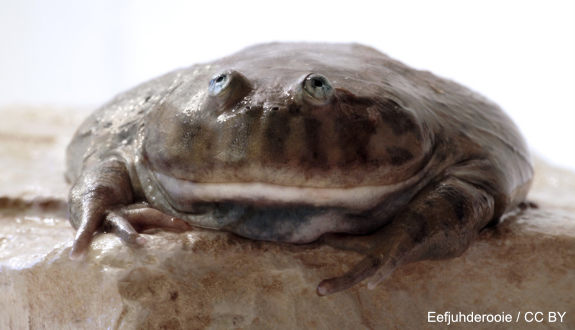

Alternative species (click on the thumbnail to see the card)
Names
Scientific name
Lepidobatrachus laevis
Common name
Hippo frog
Budgett's frog
Freddy Krueger frog
Wednesday frog
Escuerzo de agu
Origin

Origin: Uruguay, Paraguay, Argentina
Biotope: ephemeral ponds drying up at the end of summer
Dimorphism

Very easy. The males are much smaller than the females.
Group
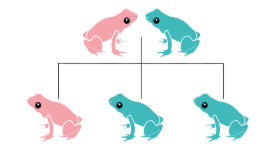
Ceratophryidae
Length

For 1 specimen: 45x45cm
or 18x18" (lxl)
Temperatures

Water temperature: 26-27°C/79-81°F
Difficulty

Easy
Size

5cm/2" (male) to 10cm/4" (female)
Longevity

10 to 13 years
Zone

Depth
Individuals
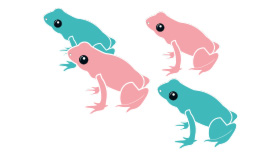
1
Food
How to feed the Hippo frog?
Food
How to feed the Hippo frog?
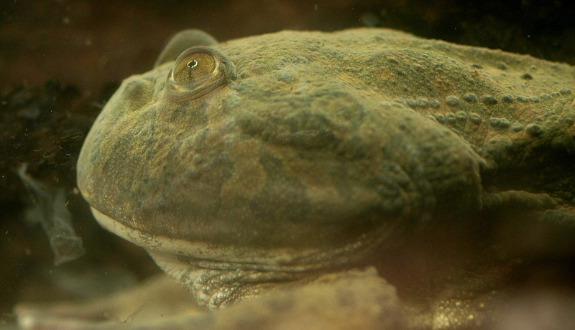
This frog is very, but then very voracious. Don't be fooled by its big eyes and feed it only 2 or 3 times a week (every 2-3 days for younger specimens). This feeding rhythm allows you to avoid obesity which is very frequent but bad for the health of your frog. Signs that your frog is full (but it will continue to feed anyway) and that it is necessary to lift the foot on the feeding: it is less reactive to prey, it is less active in its aquarium, it has difficulty swallowing...
It is a carnivorous species. You can give it various insects such as crickets, locusts, grasshoppers (medium size), earthworms, Canadian worms (rich in calcium), red runner cockroaches. Half of the time, add a dietary supplement to enrich the diet with calcium, for example by sprinkling reptile calcium powder on prey.
Vary with thawed small freshwater fish, axololt granules ... and even thawed small rodents such as mice (very occasionally)! In short, it eats EVERYTHING.
To feed it, shake the prey in front of it, it will catch it quickly. Use a silicone-tipped pliers to avoid injury. Tip: A clean pickle tongs will also do the trick.
Behavior
What kind of behavior does the Hippo frog have?
Behavior
What kind of behavior does the Hippo frog have?
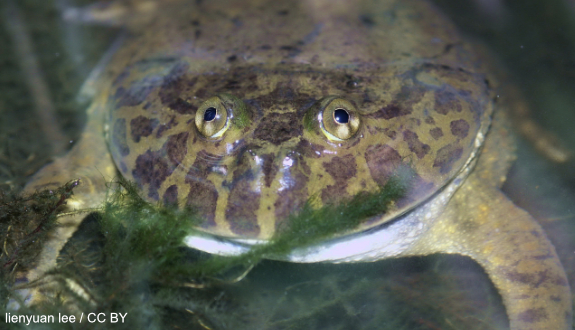
Hippo frog spends most of its time in the water and rarely emerges.
A few amusing behaviours can be observed, even though they are all linked to a defense and aggression mechanism: the frog inflates itself, opens its mouth wide to reveal its two teeth and can even shout to scare away its aggressors! In spite of its unsightly physique (which I personally find very cute), it is a very endearing animal that will know how to seduce you!
In nature, when winter comes, the marshes dry up and this frog buries itself in the ground waiting for the return of the rain. It is hibernation. In captivity, this process is not essential. Moreover, it is quite difficult to simulate, and it is even sometimes dangerous for the frog if it is not done well. However, if you want to try it (for example to breed), this period will last a maximum of 2 months (December and January). The conditions of maintenance will be identical to the basic conditions unlike maintaining a good hygrometry all year round. Gradually lower the temperature, hygrometry and water level in November. To trigger hibernation, the temperature should be between 10 and 18°C and humidity between 40 and 50%. To hibernate, the frog needs to bury itself: it therefore needs a loose substrate, covered with wet dead leaves and moss (such as sphagnum for example).
Cohabitation
Who can live with the Hippo frog ?
Cohabitation
Who can live with the Hippo frog ?
Lepidobatrachus laevis cannot be kept in groups in a small volume (less than 80 liters / 18 Imp Gal / 21 US Gal). Territorial? Characteristic? Aggressive? No! It is cannibal! Indeed, it is quite common for members of this species to eat each other... So be careful not to associate frogs of too disparate sizes.
In a larger aquarium, cohabitation is possible but the male remains smaller than the female, the chances that it will be used as a meal without being high enough...
Breeding
How to breed the Hippo frog?
Breeding
How to breed the Hippo frog?
The breeding of this frog is rather difficult. The hibernation period is essential for breed (see "behavior"). You will need 3 individuals and an aquarium of at least 120 cm of frontage.
After mating, the female lays her eggs at a shallow depth. It is a prolific species since each female can lay between 1000 and 1400 eggs.
Once born, the young grow very quickly (in the wild, they are constrained by significant climatic changes. They must be adults before the marsh dries out).
Its aquarium
Which aquarium for the Hippo frog?
Its aquarium
Which aquarium for the Hippo frog?
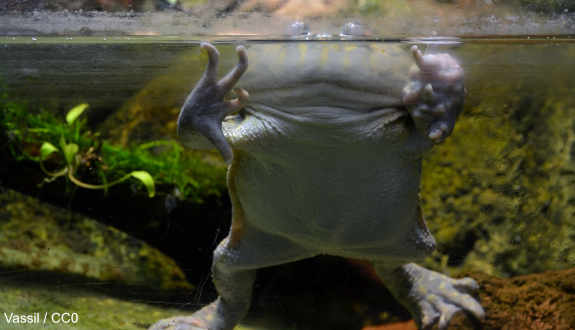
As this species hardly ever comes out of the water, an aquarium is more adapted to this way of life. Here is a list of recommendations for a suitable habitat:
- a tank of at least 45cm/18" of frontage for an individual.
- the water must absolutely be chlorine-free. To do this, let it stand for at least 24 hours before introducing it into the aquarium.
- a water height of 7 to 10cm (2.8 to 4"), no more because the frog could drown (if your frog is young and not yet an adult, adapt the water height: it must correspond to the length of the frog).
- The use of an immersion heater is essential to maintain the water at a temperature of 26-27°C (79-81°F). However, take into account the actual volume of water to determine its power. The ideal is to let the water cool down at night by turning off the heater. To do this, use a timer and adjust the time it is off so that the water does not drop below 20°C (68°F). Alternatively, if you don't have too much water, you can set the thermostat to 24°C (75°F) continuously, and the daytime lighting system will make up for the few degrees that are missing (once turned off, the water temperature naturally drops, but never below 23°C (73°F) thanks to the heating). Night cooling slows down the frog's metabolism, which is beneficial to the frog.
- an internal filter to keep the water clean (clean it once a week). Be careful because the filter will have to be powerful enough to guarantee good water quality, but not too powerful because the frog does not like the current (in the wild, it lives in marshes). It is therefore necessary to find a balance between these two constraints.
Tip: Orient the filter's discharge rod against a wall to reduce the current in the aquarium.
Tip 2: To place a filter in so little water, there are special filters for aquatic turtles, or you can take a corner filter that you lay on the ground.- a change of water every 15 days by siphoning off the waste. If your filter is just running and your water gets dirty too quickly, change half of the water every week.
- the decor: a bare floor is recommended. Indeed, the frog often eats sand or gravel which leads to intestinal obstruction. In addition, its very fragile skin can be damaged by a too sharp ground. On the other hand, put stones, pebbles, rather imposing roots... Add a few plants that are well appreciated for the shade they provide. Of course, take plants which do not need substrate, like Egeria, Anubias, Mousse of java or Hygrophila which will be able to exceed out of water! Attach this pretty little garden firmly to the elements of the decor. The Common Duckweed (Lemna minor) will soften the lighting by floating on the surface. Take advantage of the installation of the decor to create beautiful hiding places!
- a lighting system offering 10 hours of daylight per day.
- optional: a small raised part accessible even if it will be little used (it's always good to let the animal choose). For more natural, use a flat stone, a branch but in all cases the frog must be able to climb up without difficulty.
Good To know
Find all additional information!
Good To know
Find all additional information!
Very robust and not very prone to diseases (which does not prevent to take good care of it), this species is perfect for a beginner!
This frog does not appreciate to be handled and that stresses it. Take it only if it is really necessary and be very careful with its fragile skin.
It has two teeth on the lower jaw: beware of bites!
Its gaping mouth forms 1/3 of its whole body!
Yours photos!

By Encyclo-Caro
Comments
Sort by:
Please login to post comments
